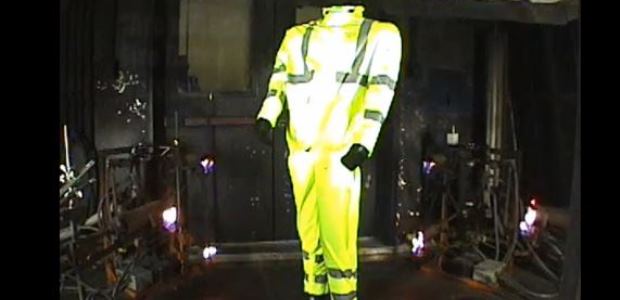
The Importance of Specifying NFPA 2112 Certified Garments for Flash Fire Protection
The real question is, for you as a safety professional, how much is your “peace of mind” worth?
- By Derek Sang
- Mar 01, 2014
We can agree consensus standards by definition are a general agreement (in the case of NFPA standards, a group of people from varied backgrounds, with varied agendas and varied objectives, come to an agreement, come to a consensus, come to a compromise) that results in an agreed-upon minimum for performance and/or measurement for certification. The NFPA 2112 standard specifies the minimum performance requirements, test methods for flame-resistant fabrics, components, and the design and certification requirements for garments for use in areas at risk from flash fires. Here we have a consensus standard written for a specific hazard, a general agreement, and a compromise.
The question then is, if your hazard assessment determines you have a flash fire hazard from dust, gas, and/or ignitable vapors and you are not specifying NFPA 2112 certified garments, why are you willing to accept garments that have not met what the industry has agreed should be the agreed-upon minimum for design, manufacturing, and certification of flame-resistant garments?
Can you meet the requirement for FR clothing with non-NFPA 2112 certified garments? Yes, you can meet the FR requirement for working in oil and gas exploration with FR garments that meet ASTM 2302. (This specification provides minimum requirements for labeling protective clothing as heat and flame resistant for applications where the potential for flame contact or high heat exposure exists.) This is a much easier specification to meet than NFPA 2112.
So if you are willing to use garments that are not NFPA 2112 certified, then my follow-up question is this: Where are you willing to hurt me? Many garments can satisfy ASTM 2302 but cannot meet NFPA 2112, so the logical follow-up question is, where do they fail?
Unfortunately, you will not know where you will be hurt or where the garments failed NFPA 2112 until the day you need that garment to perform as PPE. Let's face it, navy blue FR coveralls all look the same when you are walking around the job site; where the difference between FR coveralls and NFPA 2112 certified coveralls comes into play is how they perform in a flash fire.
A garment that is NFPA 2112 certified has, at the very least, passed a battery of tests, providing you some peace of mind that the garment has met or exceeded the requirements for the Fabrics, the Findings (what goes into constructing the garment: buttons, zippers, pocket liners, etc.), and the Facilities (the facility can consistently make the same garment time and time again). Because if the garment doesn't have the 3 F's--Fabrics, Findings, and Facilities--you have one F: Failure.
Compliant and Yet Unsafe
Why is this important? Why does it matter how the garment is constructed and of what it is constructed, if the fabric is "component recognized"? Take, for example, findings such as "zippers." Can you make a coverall with cheap "zippers" with plastic teeth and non-FR synthetic tape? Yes, you can, and they work fine until you are in a thermal event and that zipper fuses shut or the non-FR tape melts into the teeth of the zipper due to the heat and traps you in the garment.
The number one thing to minimize injury once you have escaped a thermal event is to get out of that garment! Every second spent in that garment is causing injury to your body. All of the thermal energy that is stored in the fabric and in the air gap between the fabric and your skin is being transferred to you until you get out of that garment. (At 140 degrees, it only takes three seconds for a second-degree burn. Remember, a flash fire is between 1,400 and 1,900 degrees.) Whereas a proper zipper with FR tape that does not fuse shut will allow you, a co-worker, or a first responder to remove the garment effectively, thus minimizing injury.
Are non-certified NFPA 2112 garments cheaper? Probably, because it costs money to go the extra step to ensure that garments meet or exceed the standards, and it costs money to make sure that everything that goes into that garment will not add to the injury.
The real question is, as a safety professional, how much is your "peace of mind" worth? If you save $40 per coverall, how many coveralls do you have to buy to make up for one extra day in a burn unit? An average day costs $25,000, and it takes only an extra 2-3 percent body burn to add that extra day. That could easily equate to an extra three to five seconds your employee is stuck in that coverall because that zipper melted shut because those findings did not meet NFPA 2112 and that coverall was not NFPA 2112 certified, but technically it was FR because it met ASTM 2302.
Yes, you can be compliant and still be unsafe.
This article originally appeared in the March 2014 issue of Occupational Health & Safety.